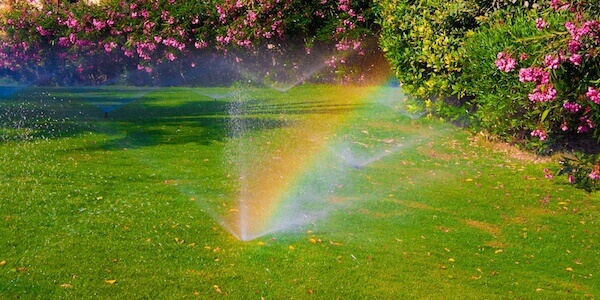
Managing your Irrigation System Like a Pro
This might sound like a no-brainer, but keeping your lawn properly irrigated is one of the most important cultural practices that we do for it. Watering should be don properly because it is a limited resource and at the same time, is vital to the health of your lawn. Here, we will explain some of the critical components of proper irrigation.
How Often to Water
The frequency of irrigation is influenced by many factors, including grass species, rainfall amounts, soil type and amount of compaction, shade presence, geographical location in the state and by season. Season is the most important factor, and irrigation systems should be reset seasonally to reflect differing water requirements.
Over-watering should be avoided at all costs, and happens when homeowners are unaware that an irrigation system should be adjusted according to the seasons. It will harm long term turf health, because it greatly increases disease susceptibility and thatch buildup and leads to a shorter root system, which reduces the turf’s overall stress tolerance and ability to survive with less water. Additionally, it promotes the growth of certain weed species, which is certainly undesirable.
University of Florida guidelines call for watering lawns on an “as-needed” basis, which can be determined by observing the grass for signs of water stress. Water stress indicates that water lost in transpiration is not being replaced and that the plant’s needs for water are not being met. Check out for these signs:
- Leaf blades are folded in half lengthwise in an attempt to conserve water.
- The grass takes on a blue-gray tint rather than maintaining a green color.
- Footprints or tire tracks remain visible on the grass long after they are made.
Not only could you waste water by not adjusting your timer according to the seasons, but you could also be the cause of poor plant health.
How Much to Water
While we’ve established that the frequency with which you water should change by season, the actual amount of water your irrigate your lawn each time should not vary in the same way. Efficient watering wets only the turfgrass root zone, does not saturate the soil, and does not allow the water to run off.
Typically, Florida soil is sandy and holds one inch of water in the top twelve inches of soil. If the roots are in the top twelve inches of soil, and it is dry, then ½ to ¾ inch of water is required to wet the area properly. Light, frequent watering is insufficient and encourages shallow root systems. Excessive irrigation, which keeps the root system saturated with water, is also harmful to the lawn. A simple watering schedule would apply ½ to ¾ inch of water when the turfgrass begins to show the drought stress symptoms. Once this amount is applied, do not apply again until the drought is noticeable. If it rains, suspend irrigation until visible drought stress symptoms appear.
When to Water
The absolute best time for lawn irrigation is in the early morning hours. Watering during the day wastes water to excessive evaporation. Watering in the late afternoon or late morning may be detrimental if it extends the time that the lawn is naturally wet from dew. This extended dew period can accelerate disease occurrence.
Uniformly Apply Water
Irrigation system installers are licensed in some counties, while in other counties there is no regulation of installation at all. This may lead to insufficient or sloppy installation, resulting in water waste and non-uniform coverage of turf areas. Even with a professionally installed system, it is important to check coverage regularly, because heads may become clogged, damaged, or off-center, and leaks in the line may occur. An easy way to check the uniformity of the system is to place small, straight sided cans in a straight line from your sprinkler to the edge of the watering pattern. Run the system for 15 minutes and check to see if you have about equal amounts of water in each can. If an area is not receiving water from one or more heads, or if a head is not providing complete coverage, dry spots can develop.
Making sure your irrigation system and schedule are running according to seasonal changes is a vital part of protecting your Florida lawn. With these tips, and a sharp eye, you’ll be the envy of the neighborhood in no time.